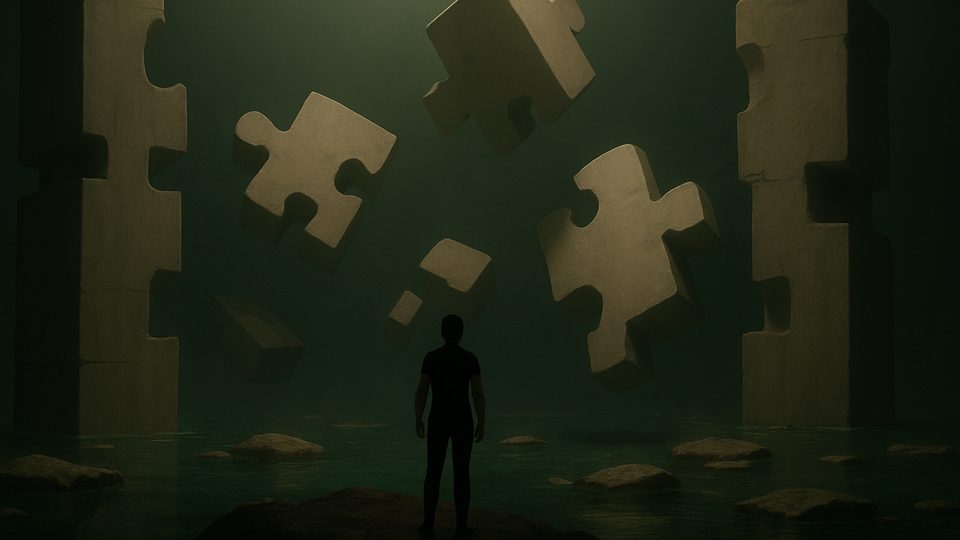Seeking Before Solving: A Designer's Path to Deeper Impact

In an industry that rewards speed, answers, and results, the best designers often do something radical: they slow down. Before jumping to solutions, they seek. They observe, ask better questions, and notice what others miss. While design thinking has popularised processes like empathising, prototyping, and testing, transformative designers take it a step further. They become seekers. They look not just for problems to solve but for truths that have yet to be named.
This seeking mindset is not about perfectionism or paralysis. It's about depth. It's about learning to see not just what's visible but what's underneath. It's about recognising that good design isn't built on cleverness but on clarity.
Design starts where attention ends
Naoto Fukasawa's work teaches us that design begins where most people stop paying attention. His creations, such as the wall-mounted CD player and the ±0 humidifier, are grounded in observing simple human actions, including gripping, turning, and pressing. These gestures often reveal invisible friction — the small, repeated annoyances that users quietly adapt to. When designers focus on these overlooked moments, they discover powerful design insights.
Good design often doesn't come from user requests. It comes from seeing what users cannot articulate. A great designer doesn't just solve expressed needs but surfaces the unspoken ones.
Leave space, don't just make a mark
Kenya Hara, the design mind behind MUJI, emphasises emptiness not as a void but as potential. In a world filled with noise, he practices restraint. Instead of overpowering a product with a visual identity, he allows the user's interpretation to complete the experience. This is not minimalism for aesthetic appeal alone; it is humility in form.
Too often, designers feel the urge to prove themselves through detail, polish, or flash. But true sophistication usually lies in what is left unsaid. When we design with restraint, we create space for the user's imagination to participate. We respect their intelligence and their context. In doing so, the design becomes more personal and more powerful.
Prototype to learn, not just to prove
James Dyson didn't set out to confirm what he already knew. He used prototyping to explore areas he didn't yet understand. Through more than 5,000 iterations of his vacuum design, each prototype acted as a question in physical form. His focus was not on building the following product but on asking, is suction still lost?
Many teams use prototypes to prove an idea works. Dyson's method shows that the best prototypes are tools to refine the problem itself. They help us ask better questions. In this way, making becomes a form of thinking. Testing leads to discovery. Progress may not follow a straight line, but it moves with more depth.
Observe thoughtless acts
IDEO's Jane Fulton Suri coined the idea of watching "thoughtless acts". These are the things people do without realising. Holding a door open with a foot, using a pen to untangle a cord, and so on are improvised hacks born from friction and rich with insight.
Instead of brainstorming clever ideas, designers should spend more time observing real-life behaviours. The problems we need to solve are often hiding in plain sight, tucked inside everyday workarounds and improvisations. By carefully observing, we begin to solve what really matters.
Let the brief speak back
Michael Bierut, a legendary designer at Pentagram, often says the answer is hidden inside the brief if you look long enough. Many designers rush into execution, eager to impress or deliver. But great design starts by sitting with the brief, questioning it, listening to it, and seeing it anew.
Often, clarity is not created but revealed. The role of the designer, then, is not just to invent but to uncover.
All these practices of observing invisible friction, leaving space, prototyping to ask, watching thoughtless acts, and reading the brief deeply have one thing in common: they resist the pressure to rush. In a culture of constant delivery, they ask us to pause. They ask us to go slow not out of fear, but out of intention.
Slowness, here, is not about procrastination. It's about precision. When designers slow down, they stop reacting and start noticing. They become curious, present, and more in tune with what really needs to be solved.
To seek is to design with your eyes open and your ego silent. It is to accept that the most valuable insights won't come from your brilliance but from your ability to see clearly.
It means taking a second look before moving forward, leaving space for the user instead of filling every gap with assumptions, testing questions as much as solutions, noticing the real needs behind what is said, and listening carefully before creating.
The world doesn't just need more designers. It needs more seekers.
In the End, It's Not About Solutions. It's About Seeing. The design world often celebrates the final product, the sleek interface, the award-winning logo, the viral campaign. But the most meaningful work begins long before any of that. It starts in the moments of seeking, of noticing what's broken, misunderstood, or invisible.
Designers who seek before they solve don't just fix problems; they also prevent them. They reveal truths. They expand what's possible. And in doing so, they remind us that design is not just about making things, it's about making sense.
Member discussion